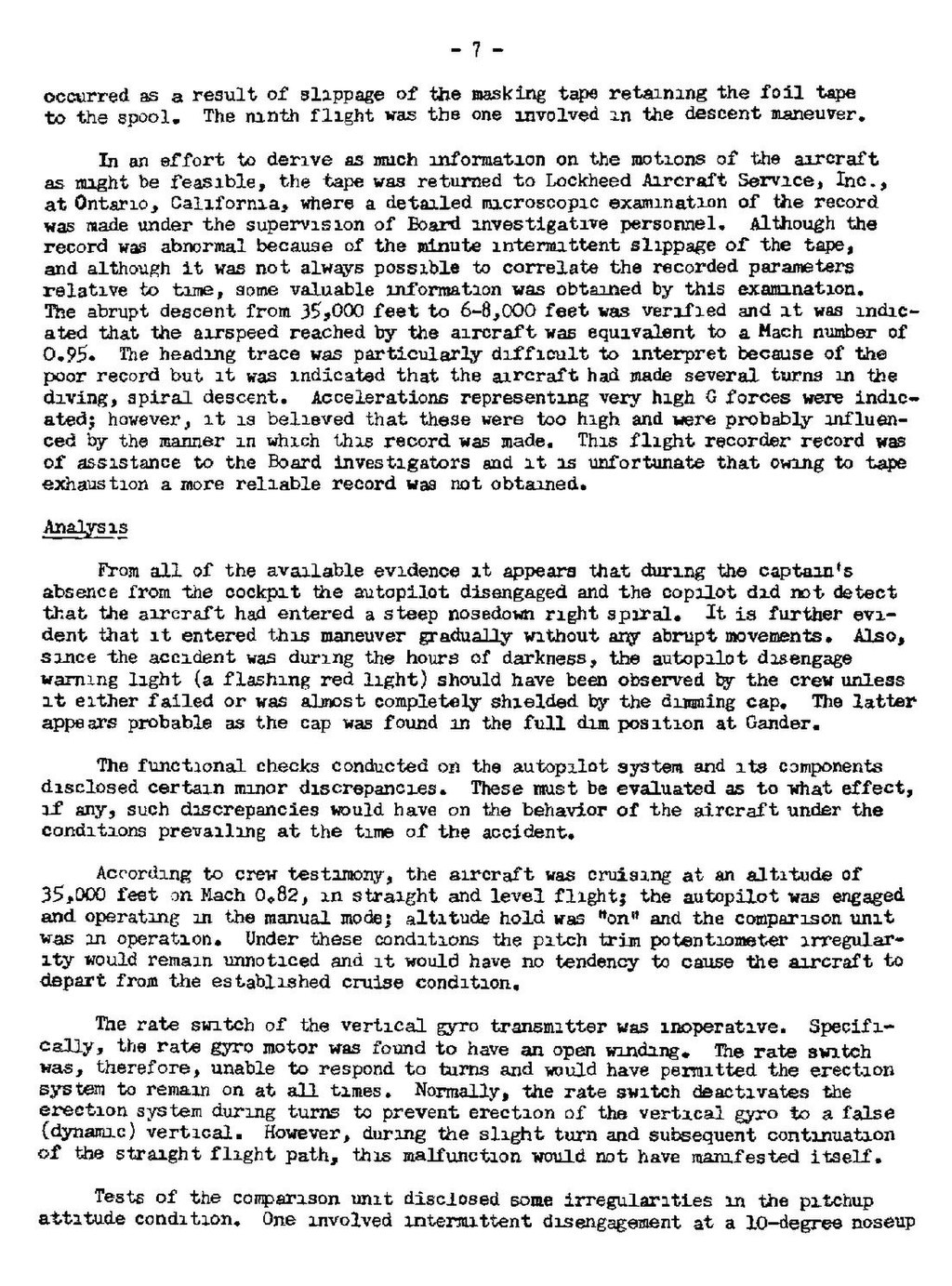- 7 -
occurred as a result of slippage of the masking tape retainang the foil tape to the spool. The ninth flight was the one involved in the descent maneuver.
In an effort to derive as much information on the motions of the aircraft as might be feasible, the tape was returned to Lockheed Aircraft Service, Inc., at Ontario, California, where a detailed microscopic examination of the record was made under the supervision of Board investigative personnel. Although the record was abnormal because of the minute intermittent slippage of the tape, and although it was not always possible to correlate the recorded parameters relative to tune, some valuable information was obtained by this examination. The abrupt descent from 35,000 feet to 6-8,000 feet was verified and at was indicated that the airspeed reached by the aircraft was equivalent to a Mach number of 0.95. The heading trace was particularly difficult to interpret because of the poor record but it was indicated that the aircraft had made several turns in the diving, spiral descent. Accelerations representing very high G forces were indicated; however, it is believed that these were too high and were probably influenced by the manner in which this record was made. The flight recorder record was of assistance to the Board investigators and it is unfortunate that owing to tape exhaustion a more reliable record was not obtained.
Analysis
From all of the available evidence it appears that during the captain's absence from the cockpit the autopilot disengaged and the co-pilot did not detect that the aircraft had entered a steep nosedown right spiral. It is further evident that it entered this maneuver gradually without any abrupt movements. Also, since the accident was during the hours of darkness, the autopilot disengage warning light (a flashing red light) should have been observed by the crew unless it either failed or was almost completely shielded by the timing cap. The latter appears probable as the cap was found on the full dim position at Gander.
The functional checks conducted on the auto-pilot system and its components disclosed certain minor discrepancies. These must be evaluated as to what effect, if any, such discrepancies would have on the behavior of the aircraft under the conditions prevailing at the time of the accident.
According to crew testimony, the aircraft was cruising at an altitude of 35,000 feet on Mach 0.82, in straight and level flight; the autopilot was engaged and operating in the manual mode; altitude hold was "on" and the comparison unit was in operation. Under these conditions the pitch trim potentiometer irregularity would remain unnoticed and it would have no tendency to cause the aircraft to depart from the established cruise condition.
The rate switch of the vertical gyro transmitter was inoperative. Specifically, the rate gyro motor was found to have an open winding. The rate switch was, therefore, unable to respond to turns and would have permitted the erection system to remain on at all times. Normally, the rate switch deactivates the erection system during turns to prevent erection of the vertical gyro to a false dynamic vertical. However, during the slight turn and subsequent continuation of the straight flight path, the malfunction would not have manifested itself.
Tests of the comparison unit disclosed some irregularities in the pitchup attitude condition. One involved intermittent disengagement at a 1O-degree noseup
